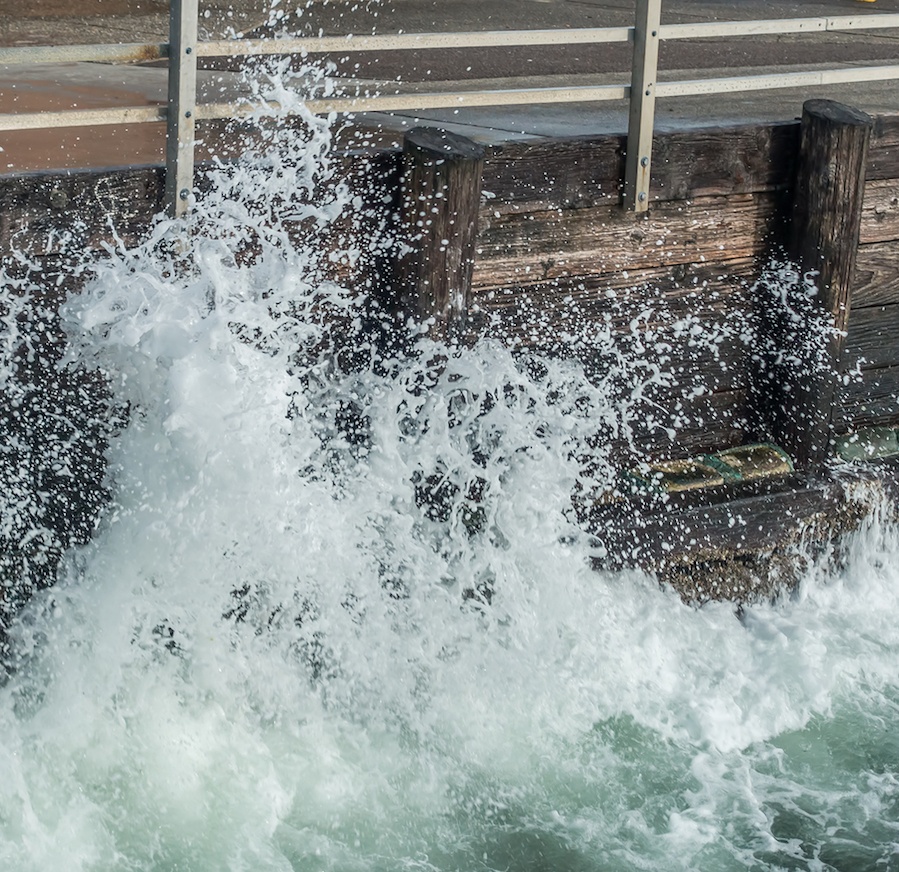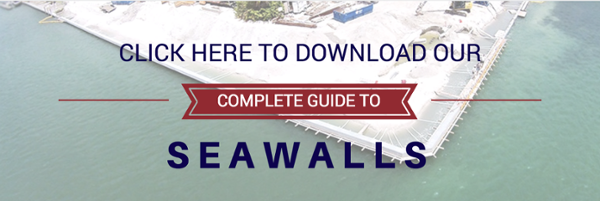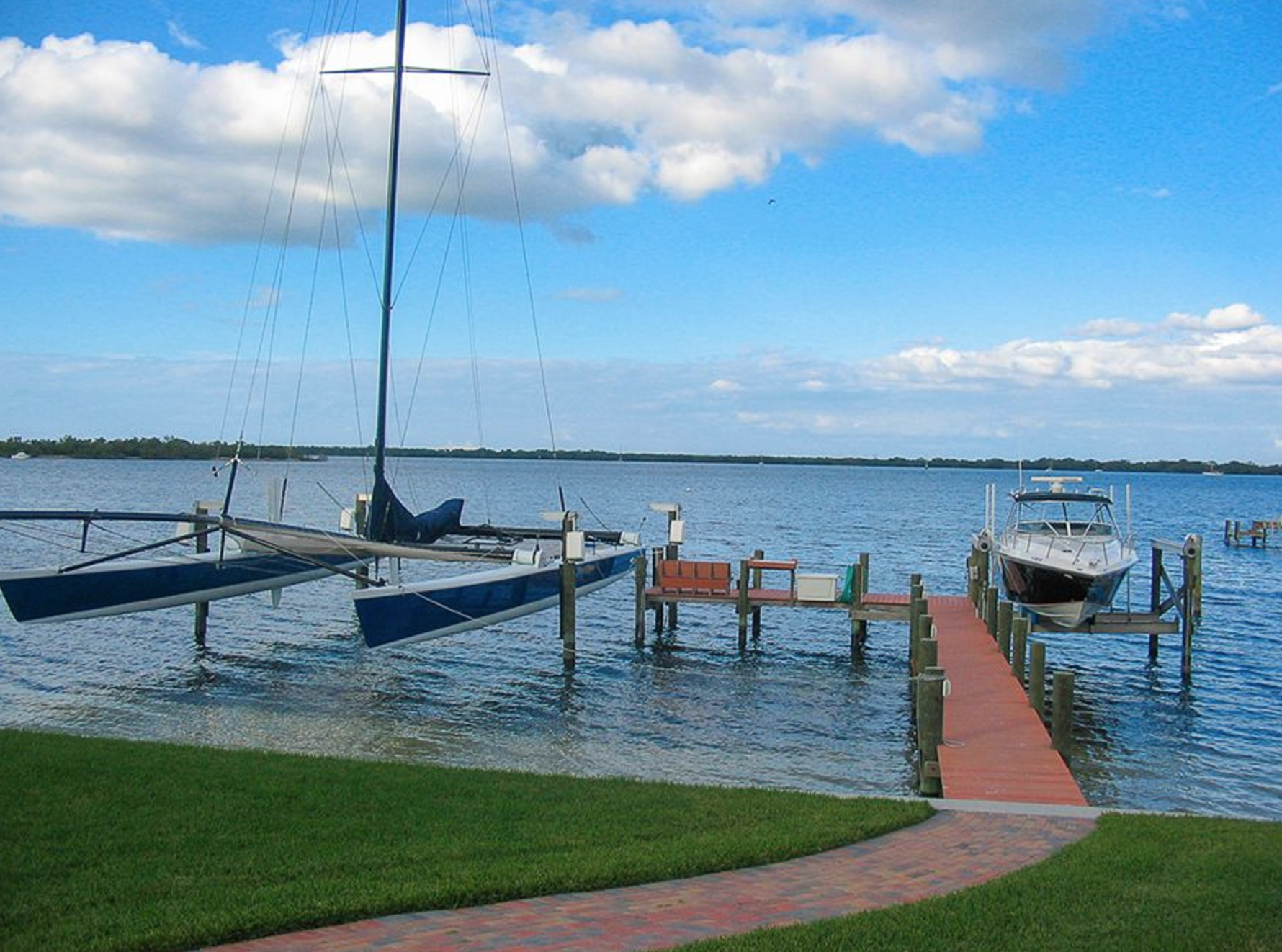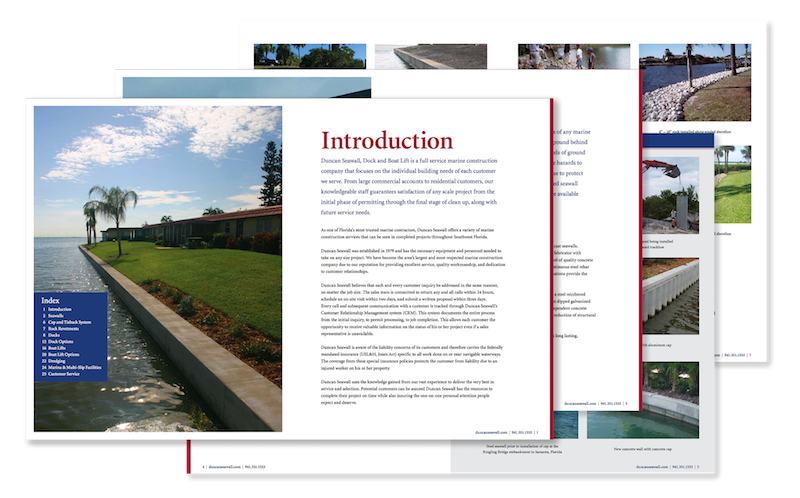Since 1979, Duncan Seawall, Dock & Boat Lift has been serving the seawall and retaining needs of Southwest Florida. Our portfolio of completed projects is extensive, and includes everything from private retaining walls on canals and lakes to major municipal projects along the Gulf Coast.
To help you get a better idea of what a wood retaining seawall entails, we have compiled a FAQ for your consideration, and we encourage you to download our Guide to Seawalls.
Related Blog: 4 Reasons Seawalls Fail and How to Prevent it
How Long Will A Wood Retaining Wall Last?
With proper maintenance a wood retaining seawall may last for a very long time. It may be necessary to replace pilings or other parts of the structure as they show signs of wear, and some backfill to replace normal erosion is likely. In the end, the longevity of the seawall will depend on the materials used in construction, the quality of work performed, and such factors as weather and tidal impacts.
What Factors Affect My Seawall?
A retaining wall is constantly being bombarded by natural forces. Waves, winds, and tides can undermine the wall. Wind and rain can cause erosion behind the wall. In Florida, temperature fluctuations can have an effect as well, including warping wood and causing fasteners to pull out due to periodic expansion and contraction of the materials. A well-built seawall will protect your property against severe storms, but a strong hurricane can have unpredictable effects.
How Often Should A Seawall Be Inspected?
It is a good idea to give your seawall a cursory inspection at least once a year. To make inspection easier, take images of the seawall to compare against future inspections. This will be helpful in spotting bowing, which may happen very slowly over time. If there is any sign of erosion or bowing, or if repairs are needed, enlist a professional to provide a full inspection and estimate for repairs. To verify the integrity of the retaining wall, have it professionally inspected every 3 to 5 years.
What Type Of Damage Should I Look For?
Look for any type of rot, infestation, erosion, or damage. This includes observable problems, such as:
- Erosion behind the seawall
- Verifying that the cap is in good condition
- Checking the pilings and retaining wall for wear and decay
- Looking for missing pieces
- Looking for bowing or tilting
Should I Repair Or Replace My Seawall?
Whether it’s time to repair or replace depends a on large number of factors. If there is enough damage to warrant making this choice, the best option is to consult a licensed contractor. Factors that could influence your decision are:
- Amount of damage present
- Cost of seawall repair vs. replacement
- Decision to use different materials
- Plans to sell the property
Do I Need A Permit For Repairs?
All new construction has to be permitted, but some repairs can be made without permits. At the time of consultation, your chosen contractor will be able to explain the scope of work, offer you potential options, and any regulations which might have to be taken into consideration.
Is Wood The Best Option?
Not always. Wood is commonly used for canals and lakes, but may not the best option for coastal seawalls. Retaining seawalls can be constructed out of wood, concrete, steel, or composite materials. The best type of material will depend the location and factors such as:
- Water Depth
- Zoning Ordinances
- Type of Marine Influence (tidal, lake, river, etc)
- Cost
- Timeframe
How Should I Choose A Contractor?
The best advice is to look for a well-established contractor with a large portfolio of completed projects. You should also check with the Better Business Bureau. Talk to friends, neighbors, and people in your homeowners association. Ask for a free consultation, and ask questions of the representative. Retaining seawalls are an investment, and your contractor should be one that you are comfortable working with.
Duncan Seawall, Dock & Boat Lift is fully licensed and insured. With 38 years of experience in Florida marine construction, we have built a solid reputation as a complete source for docks and seawalls, including our own in-house electrical team. We would be happy to meet with you to discuss your retaining seawall installation, repair, or replacement options. To get started, call or or contact us today.










